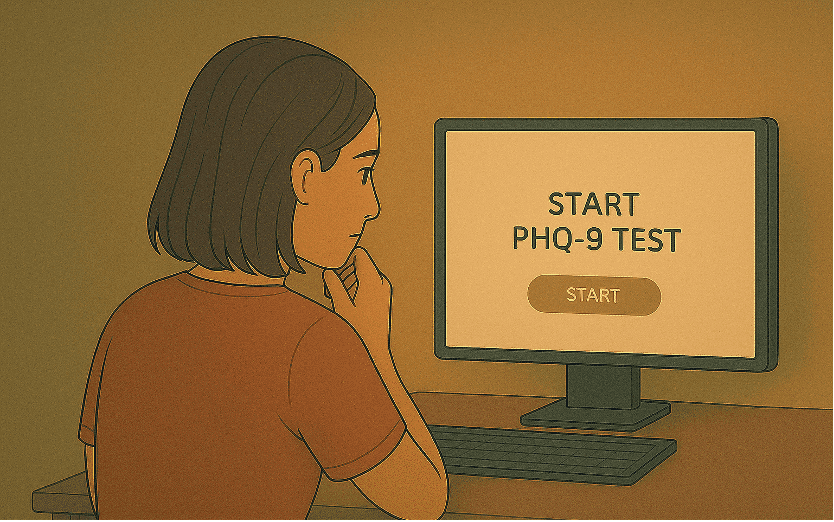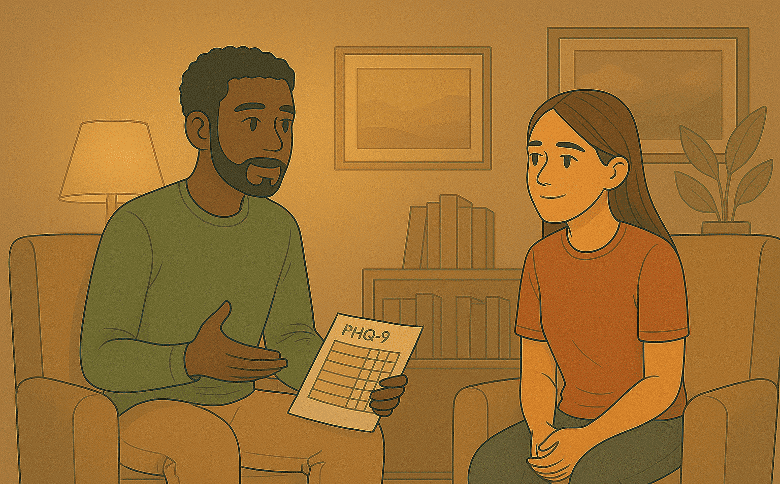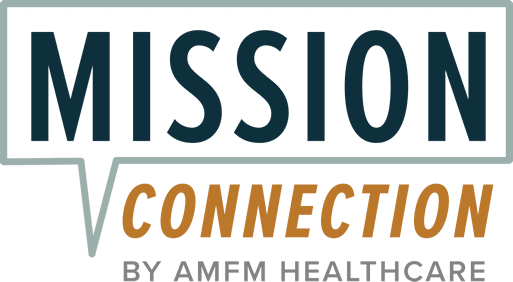
Key Takeaways
- Early depression screening with tools like the PHQ-9 helps identify symptoms promptly, opening the door to timely support and treatment.
- Depression can appear emotionally, physically, or behaviorally; recognizing varied signs early allows for intervention before issues worsen.
- PHQ-9 results guide treatment decisions, helping healthcare providers understand symptom severity and track progress over time.
- Using the PHQ-9 alongside professional care, self-help strategies, and social support improves outcomes and fosters long-term mental wellbeing.
- Mission Connection provides personalized, evidence-based mental health care, including individual and group therapy, psychiatric support, and an online PHQ-9, making access to flexible, compassionate care easy wherever you are.
Depression Screening: Why It Matters
Depression affects millions yet often goes unnoticed until symptoms worsen. Tools like the PHQ-9 help identify early signs and connect people to the right support. Screening doesn’t just find problems—it opens the door to solutions.
Depression Signs You Shouldn’t Ignore
Depression looks different for everyone. Some feel persistent sadness or emptiness; others notice irritability or a loss of interest in things they once enjoyed. Physical signs like sleep changes, appetite shifts, or constant fatigue may also appear. Trouble concentrating, feelings of worthlessness, or thoughts of death need immediate attention. The PHQ-9 helps capture these varied experiences through clear, targeted questions.
Benefits of Early Detection
Early screening leads to better outcomes. When depression is identified early, therapy, lifestyle adjustments, and sometimes medication can be highly effective. Early detection prevents symptoms from escalating and lowers the risk of complications like relationship strain or suicidal behavior. Studies show using standardized tools like the PHQ-9 makes proper treatment more likely.
When to Take a Depression Screening Test
Take the PHQ-9 if you’ve noticed mood, energy, or interest changes lasting over two weeks. It’s especially useful during life transitions, moving, job changes, breakups, or after childbirth. Those with a family history of depression may benefit from regular screening. Many healthcare providers now include the PHQ-9 in routine check-ups, treating mental health like any other vital sign. Taking a screening test isn’t a weakness as it’s a sign of strength and self-awareness.
Mission Connection offers flexible outpatient care for adults needing more than weekly therapy. Our in-person and telehealth programs include individual, group, and experiential therapy, along with psychiatric care and medication management.
We treat anxiety, depression, trauma, and bipolar disorder using evidence-based approaches like CBT, DBT, mindfulness, and trauma-focused therapies. Designed to fit into daily life, our services provide consistent support without requiring residential care.
What is the PHQ-9 Test?
The PHQ-9 (Patient Health Questionnaire-9) is a clinically validated, nine-question tool used worldwide to screen for and measure the severity of depression. Each question corresponds to one of the nine criteria for major depressive disorder, assessing how often specific symptoms have occurred over the past two weeks. It identifies the presence of depression and tracks symptom changes over time, helping guide treatment. Originally used in clinical settings, the PHQ-9 is now also available online, maintaining its reliability as a screening, not diagnostic tool.
Origins and Development
Developed in the 1990s by Drs. Spitzer, Williams, and Kroenke, with Pfizer’s support, developed the PHQ-9, which evolved from the longer PRIME-MD assessment to fit the time limits of busy healthcare environments. Today, it’s translated into more than 30 languages and is one of the most trusted depression screening tools worldwide.
How It Differs From Other Screenings
The PHQ-9 stands out for its brevity, DSM alignment, and dual function as both a screening and severity measure. Unlike longer tools such as the Beck Depression Inventory, it’s practical for routine use while remaining highly accurate. Its inclusion of a suicide risk question adds vital safety insight, and its self-administration format makes it effective both in clinics and online platforms.

Why Professionals Trust It
One study found that telephone-administered PHQ-9 assessments are highly reliable, showing strong agreement with self-administered scores and maintaining high internal consistency. Validation studies published in 2001 confirmed its accuracy across diverse populations.
The 9 Questions on the PHQ-9
The PHQ-9 includes nine focused questions that assess how often depression symptoms have appeared over the past two weeks. Each question reflects a key diagnostic feature of major depressive disorder, covering mood, energy, sleep, appetite, concentration, and thoughts of self-harm. Its strength lies in being both comprehensive and concise.
What the Questions Measure
Questions 1 and 2 identify core symptoms, depressed mood, and loss of interest or pleasure. Questions 3–5 address physical symptoms like sleep issues, fatigue, and appetite changes. Questions 6–8 find mental and behavioral effects such as feelings of worthlessness, trouble focusing, and changes in movement or speech. Responses range from not at all (0) to nearly every day (3), giving a clear picture of symptom frequency. You can take the test through the Mission Connection PHQ-9 assessment tool.
The Critical Suicide Risk Question
Question 9 focuses on suicidal thoughts or self-harm. Even a single positive response here requires immediate attention, regardless of the total score. Reputable PHQ-9 platforms provide instant crisis resources if this question is answered positively, recognizing that suicidal ideation can appear at any depression level.
Why the Two-Week Time Frame Matters
The PHQ-9 asks about symptoms over the last two weeks to track current changes rather than long-term patterns. This consistency helps you and healthcare providers monitor progress, compare results over time, and evaluate treatment effectiveness.
How PHQ-9 Scoring Works
The PHQ-9 converts your experiences into measurable data using a simple point system. This helps both you and healthcare providers understand symptom severity and track progress over time.
Point System Explained
Each response is scored based on how often you’ve experienced symptoms in the past two weeks:
- Not at all = 0
- Several days = 1
- More than half the days = 2
- Nearly every day = 3
The total score ranges from 0 to 27. This captures both how many symptoms you have and how frequently they occur, providing a balanced view of depression severity.
Score Ranges and What They Mean
- 0–4: Minimal or no depression – Normal mood variation; keep monitoring.
- 5–9: Mild depression – Try self-help strategies and follow up in a few weeks.
- 10–14: Moderate depression – Consider therapy or counseling.
- 15–19: Moderately severe depression – Active treatment recommended, possibly including medication.
- 20–27: Severe depression – Immediate, comprehensive care needed.
Understanding Your Results
Scores guide treatment discussions but don’t replace professional evaluation. Even a moderate score can significantly affect daily life, so sharing your results with a healthcare provider ensures the right support and treatment plan for your situation.
4 Reliable Places to Take the PHQ-9 Online
Many websites offer the PHQ-9, but reliability, privacy, and support resources vary widely. Below are trusted options that uphold the integrity of the original test and provide helpful next steps based on your results.
1. Mental Health America (MHA)
MHA has a respected, anonymous PHQ-9 screening with instant results and resources specific to your score. As a leading nonprofit for mental health awareness, it connects users with local support options and educational materials. The platform is multilingual and includes additional screenings for anxiety, bipolar disorder, and PTSD.
2. Patient Health Questionnaire Online
This site hosts the official version of the PHQ-9 from its original developers. It follows validated scoring and interpretation guidelines, offering clear, evidence-based recommendations after completion. Users can also download their results to share with healthcare providers, ideal for those seeking a clinically precise version of the test.
3. University Mental Health Portals
Many universities, such as the University of Washington, provide online PHQ-9 screenings through their wellness centers. These tools are often available to the public and include resources specific to academic and student-related stress. Their close ties to research-backed counseling programs make them reliable and informative.
4. Telehealth Services
Telehealth platforms like Mission Connection integrate the PHQ-9 into their mental health services, combining screening with direct access to professional support. If your results indicate moderate or severe depression, Mission Connection allows you to connect quickly with licensed therapists or psychiatrists, often within 24–48 hours. This seamless link between screening and care ensures faster, more effective support when it’s needed most.
Step-by-Step Guide to Taking the Test Online
Taking the PHQ-9 online is quick and simple, usually under five minutes, but a thoughtful approach ensures the most accurate and useful results.
Prepare Your Space
Choose a quiet, private area without distractions. Pick a time when you’re alert but not overly tired or stressed, and turn off notifications. Aim to reflect on the past two weeks rather than reacting to a single event.
Answer Honestly
The test works best when you respond truthfully. Focus on actual experiences over the last two weeks, avoiding both minimization and exaggeration. If unsure between two options, select the higher frequency to avoid missing potential concerns. Take a moment to consider each question carefully rather than rushing.
Save and Interpret Your Results
Most platforms provide a total score with an interpretation. Save your results and note the date to track changes over time. Pay attention to which symptoms are most impactful, and use this insight to guide self-help or discussions with healthcare providers. However, the PHQ-9 is a screening tool, not a diagnosis. If your score indicates moderate to severe depression, prioritize consulting a healthcare professional for guidance and support.
What to Do With Your PHQ-9 Results

Your PHQ-9 score is just the starting point, how you respond can guide meaningful steps toward better mental health.
When to Seek Immediate Help
Scores in the moderately severe (15–19) or severe (20–27) ranges warrant prompt professional attention. Any positive response to Question 9 about self-harm or thoughts of death requires immediate action. Crisis support is available 24/7 via the 988 Suicide & Crisis Lifeline. Emergency care (911 or ER) is needed if there’s a suicide plan, access to means, inability to keep yourself safe, or psychotic symptoms.
Discussing Results With Providers
Share your PHQ-9 score, previous results, symptom history, triggers, and which symptoms affect daily life most. Include past self-help or treatments and medication adherence. Ask questions about options, timelines, and side effects, your experience is as important as the score.
Using PHQ-9 for Treatment Monitoring
Retake the PHQ-9 every 2–4 weeks during treatment to track progress objectively. A drop of 5+ points indicates meaningful improvement, while scores under 5 often signal remission. Tracking scores over time helps guide treatment adjustments and complements your personal experience of recovery.
Beyond the PHQ-9: Next Steps for Mental Health
The PHQ-9 is just the starting point for understanding your mental health. If your results show minimal or significant symptoms, taking next steps can help you move toward wellbeing.
Professional Support
Access licensed therapists and structured programs through services like Mission Connection, which offer personalized care and guided therapy for depression. Other options include community mental health centers, digital therapy platforms, and Employee Assistance Programs (EAPs) that provide counseling and treatment guidance.
Self-Care Strategies
Complement professional care with evidence-based habits: daily physical activity, consistent sleep routines, mindfulness or meditation, limiting alcohol/caffeine, and scheduling enjoyable activities to counter isolation. These practices enhance treatment outcomes and support mental health day-to-day.
Building a Support Network
Share your experience with trusted friends, family, or peer groups. Consider joining online or local support networks for connection and encouragement. Even small steps, regular check-ins or brief social interactions can reduce isolation and strengthen resilience.
Take the Next Step with Mission Connection
Screening with the PHQ-9 is only the beginning. Mission Connection provides personalized, evidence-based mental health care to help you take meaningful next steps. Specializing in depression, anxiety, trauma, and mood disorders, our programs combine individual therapy, group sessions, psychiatric care, and medication management.

With flexible in-person, virtual, and hybrid options, Mission Connection makes sure that our care fits your lifestyle. Licensed clinicians deliver therapies like Cognitive Behavioral Therapy (CBT), Dialectical Behavior Therapy (DBT), Eye Movement Desensitization and Reprocessing (EMDR), and Emotion-Focused Therapy (EFT) that are specific to your needs, empowering you with tools for lasting mental wellness.
Mission Connection also has an online PHQ-9 assessment, making it easy to screen for depression from the comfort of your home. Results can guide your next steps, connecting you with therapists and programs that provide the right level of support for your mental health journey.
Accessible in California, Washington state, and Virginia, Mission Connection offers telehealth for remote care, and focuses on compassionate, evidence-based treatment. Start your journey today to build skills, resilience, and a stronger foundation for long-term wellbeing.
Call Today 866-833-1822.
Frequently Asked Questions (FAQs)
How often should I take the PHQ-9 test?
For general monitoring, take the PHQ-9 every 3–6 months. If experiencing symptoms or in treatment, every 2–4 weeks helps track progress. Avoid daily testing; consistent intervals reveal meaningful trends, not temporary mood shifts.
Is the online version as accurate as one taken at a doctor’s office?
Yes, online PHQ-9 results match in-person testing when the original questions and scoring are used. Accuracy depends on honest self-reporting and using a private, distraction-free environment. Professional context adds interpretation and guidance.
What should I do if I score high on the suicide question?
Any positive response on question 9 requires immediate attention. Contact the Suicide & Crisis Lifeline, or go to an emergency room. Seeking help is critical, and timely professional support can save lives.
Can teenagers and older adults use the same PHQ-9 test?
The PHQ-9 works across ages, but adolescents may benefit from the PHQ-A. Older adults’ results require considering medical or cognitive factors. Interpretation should account for age-specific symptom patterns and be discussed with a knowledgeable provider.
Can the PHQ-9 diagnose depression by itself?
No, the PHQ-9 is a screening tool, not a diagnostic test. It highlights symptom severity and who may need further care. Programs like Mission Connection can use these results to provide personalized therapy and professional evaluation.








